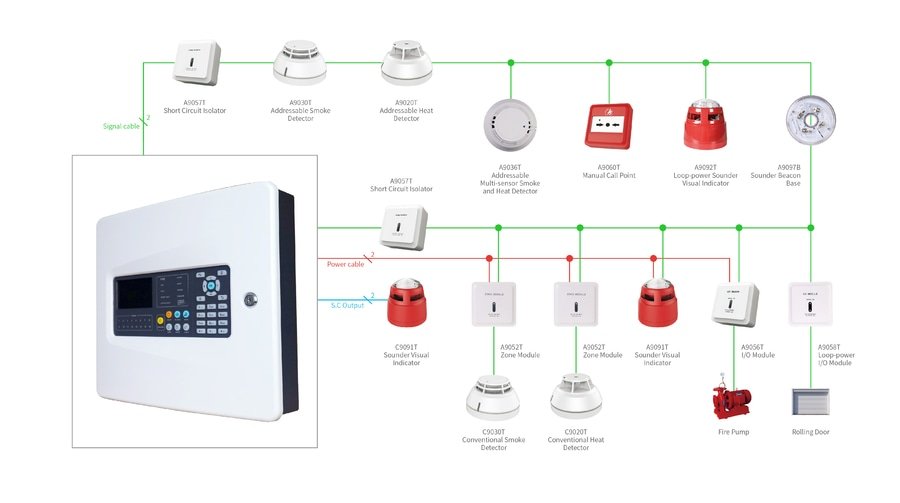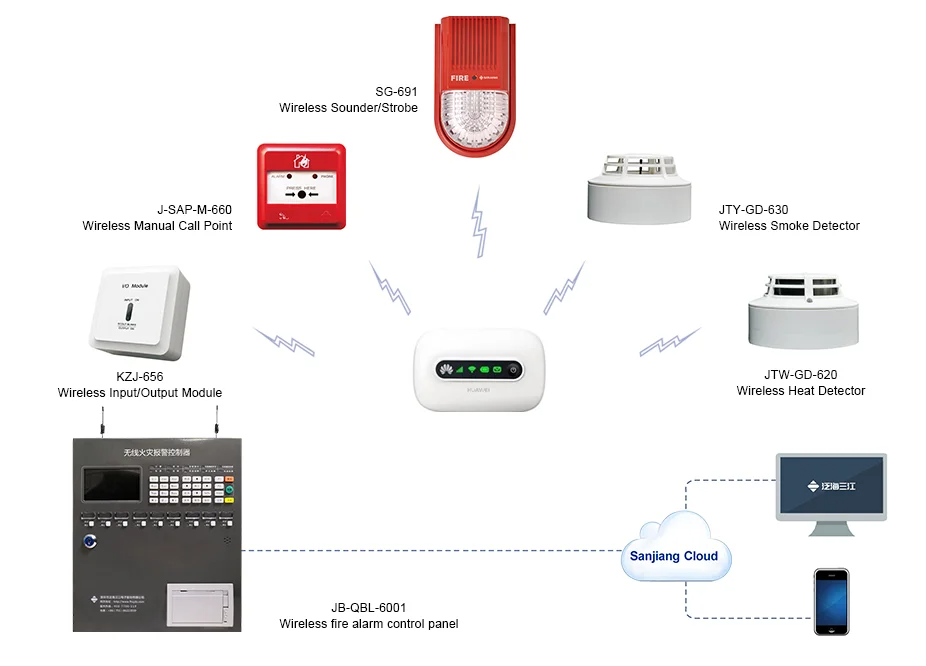MOST REALIBLE FIRE ALARM SYSTEM IN DAVAO
fire detection and alarm system
Fire Detection and Alarm System (FDAS)
A Fire Detection and Alarm System (FDAS) is a vital safety solution designed to detect fire, smoke, or gas leaks and alert occupants through audible and visual alarms. It helps prevent fire-related damage and ensures a swift emergency response.
FDAS typically includes smoke detectors, heat sensors, manual call points, alarm sounders, and control panels that work together to provide real-time monitoring and early warning. These systems are essential for commercial buildings, residential areas, and industrial facilities to enhance fire safety compliance and property protection.
At JDL Security Systems Technology, we provide high-quality FDAS solutions, including installation, maintenance, and system upgrades, ensuring optimal performance and reliability for your safety needs.
Conventional FDAS
A Conventional Fire Detection and Alarm System (FDAS) divides a building into multiple zones, each monitored by a dedicated circuit of fire detection devices. When a fire is detected, the control panel identifies the affected zone but does not specify the exact device that triggered the alarm. This system is cost-effective and easy to install, making it ideal for smaller buildings or less complex structures. It typically includes smoke detectors, heat detectors, manual call points, and alarm sounders, providing reliable fire detection and early warning to enhance safety and emergency response.

Addressable Fire Alarm System
An Addressable Fire Detection and Alarm System (FDAS) assigns a unique address or identifier to each device, including smoke detectors, heat detectors, and manual call points. This allows the fire alarm control panel to precisely locate the exact device that triggered the alarm within a building. When an alarm is activated, the control panel displays the specific device and its location, enabling faster and more efficient emergency response. Addressable systems are highly accurate and reliable, making them ideal for larger or more complex buildings where pinpoint accuracy is crucial for safety and fire management.

Wireless Fire Alarm System
A Wireless Fire Alarm System is a type of fire detection and alarm system that uses wireless communication instead of traditional hardwired connections. It includes smoke detectors, heat detectors, manual call points, and alarm sounders, all of which communicate with a central control panel via radio frequency signals. This system offers easier installation, reduced costs, and greater flexibility in device placement. Wireless fire alarm systems are ideal for buildings where running wires is difficult or impractical, such as historic buildings, temporary structures, or large complexes, making them a preferred choice for fire alarm installers in such environments.


Fast Fire Detection and Response
Detects fire at an early stage, allowing for quick evacuation and immediate action, reducing potential harm and property damage.
Compliance with Safety Standards
Ensures that buildings meet fire safety regulations, helping avoid legal issues and enhancing overall safety credibility.
Lower Insurance Costs
Many insurance providers offer discounted premiums for properties with a reliable FDAS, as they lower the risk of severe fire damage.
Enhanced Safety and Security
Provides peace of mind to occupants and building managers, knowing that an effective fire alarm system is in place to protect lives and assets.
FDAS Installer
Trust the leading fire alarm installer in Davao to protect what matters most to you.
- jdldavao@yahoo.com
- 082-3003418